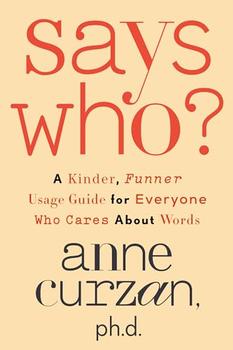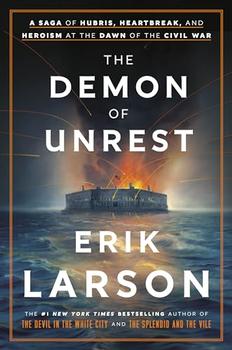Reading Guide Questions

Please be aware that this discussion guide will contain spoilers!
- Jane Urquhart doesn't title individual
chapters, instead she divides her novel into three
large sections: "The Revelations"; "The Bog
Commissioners"; "A Map of Glass". Look at each of
these sections and discuss why it is given that
particular title. The name of the second section, "The
Bog Commissioners," is at first mysterious because
Joseph Woodman only stayed in Ireland as a bog
commissioner for less than half a year. But something
of the mentality or attitude he demonstrates in
Ireland travels with him to Canada, and it informs
other characters too. What is that attitude, and how
does it play out in the novel? When discussing the
name of the last section, "A Map of Glass," also
consider why Urquhart chose that as the title of the
book.
- The epigraph of the novel tells us that the "logical, two dimensional picture" provided by a
diagram, plan, or map "rarely looks like the thing it
stands for." Which characters make maps or diagrams?
What function do they serve? How do they relate to
some of the book's central concerns? What makes a
"true" map?
- In the short preface [pp. 1-5], where we meet
Andrew walking in the snow as an older man, he
ruminates on many of the novel's important themes and
ends by saying, "I have lost everything." Now that
you've finished the novel, re-read the preface and
identify the issues, and even the words, that will
dominate and unify the book.
- Renaissance poets and playwrights were obsessed
with what they called Mutability, or change. So is
Jane Urquhart, who broods in most of her novels over a
lost, pristine landscape and the smaller, more human
settlements of the nineteeth century. Change is the
central theme in A Map of Glass, affecting
everything from forests and shorelines to human
memory. List some of the irrevocable changes detailed
in the book. What are some of the natural symbols
Urquhart uses to underscore this theme? What is the
relationship in the book between human arrogance and
change? What are some of the ways characters try to
arrest change, or record what is passing? Is change
ever seen as good in the novel?
- Sylvia is the character who most thoroughly
resists change. What are some of the methods she
devises to keep her world as stable as she can manage?
Do you feel Urquhart is critical of Sylvia's
strategies and eccentricities, seeing them as
symptomatic of illness, or to some extent does she
approve of them?
- One of Sylvia's mementoes of Andrew is his
book, The Relations of History and Geography.
How do history and geography interact in A Map of
Glass?
- Malcolm thinks of Sylvia largely, if not
primarily, as a patient, although the exact nature of
her problem is never identified. How would you write
Sylvia's case history?
- The idea of "the elusive man" figures
prominently in all of Jane Urquhart's novels. The
beloved is somehow emotionally or physically
unavailable, whether it is because he dies, he's
married, he has a vocation or mission more compelling
than the relationship, or he's ambivalent in some
other way. How do Andrew and Jerome fit into this
recurring theme?
- With the exception of A Map of Glass and
her earlier novel Changing Heaven, Jane
Urquhart has not written about the
late-twentieth-century or early-twenty-first-century
world. How does the use of two time frames, nineteenth
century and contemporary, enrich her themes in A
Map of Glass? Do you discern any differences in
the two time frames? For example, in terms of the
psychological reality, the use of dialogue, the
narrative voice? Do you have a preference for the
contemporary or nineteenth-century sections?
- Sylvia asks her friend Julia, "What is the
difference, really, between touch and collision?" [p.
70]. Characters in A Map of Glass are
powerfully affected by touch. Most obviously, Sylvia
fears being touched. How do the two men in her life
react to that? Who else reacts strongly to touch?
- Annabelle thinks she and Marie are two sides
of a complete self. How so?
- Several characters in A Map of Glass
are visual artists, whether they know it or not —
Annabelle, Bran, Jerome, Mira, and Joseph Woodman.
When Sylvia tells Jerome about the tactile maps she
makes for her blind friend Julia, he tells her that
she, too, is making art. Some art fixes something real
or imagined into permanence or semi-permanence; other
art, like Mira's performance work, is transitory.
Discuss the different kinds of art and artists in the
book. How do they echo or illuminate some of the
novel's concerns.
- What role does money play in this novel?
- In many ways, Mira is one of the novel's most "adjusted" characters. Discuss some of the ways Mira's
life — personal and professional — is a success, and
how this sheds light on some of the other characters'
lives. Do you like her? How does her art of making
"swaddles" reflect her personality?
- After he finishes reading Andrew's journals,
Jerome remarks that "maybe landscape — place — makes
people more knowable. Or it did, in the past" [p.
336]. How do various characters in the novel exemplify
this idea? In A Map of Glass, landscape or a
strong sense of place can be an imprisoning force;
with other characters, it is a source of safety or
freedom. Discuss the main characters' reaction to
their present or remembered landscape.
- Malcolm is described as having made Sylvia "in
her natural habitat" — the house and the County in
which she has always lived — his life's work. Why does
he do that? How successful is his life's work? Do you
find him a sympathetic character?
- In the same period that he discovers the body
of Andrew, which ultimately leads to his relationship
with Sylvia, Jerome befriends and domesticates the cat
Swimmer. Are there resemblances between Sylvia and
Swimmer?
- One of the interesting questions that can be
asked about a character is: Does he or she learn
something significant in the course of the novel, or
otherwise evolve? Which characters in A Map of
Glass are different at the end of the novel, and
how? Which ones remain unchanged?
- Although one of the points of this novel is,
as Sylvia tells Jerome, that "all life is an exercise
in forgetting" [p. 367], stories are one way to keep
the past alive. Discuss some of the stories
remembered, recorded, read, and told in the book, and
the ways in which they echo or deepen the story. How
does the memory of a particular story and its reader
bring both joy and sorrow to Jerome at the end of the
novel?
Unless otherwise stated, this discussion guide is reprinted with the permission of MacAdam/Cage Publishing.
Any page references refer to a USA edition of the book, usually the trade paperback version, and may vary in other editions.

 Book Reviewed by:
Book Reviewed by:


